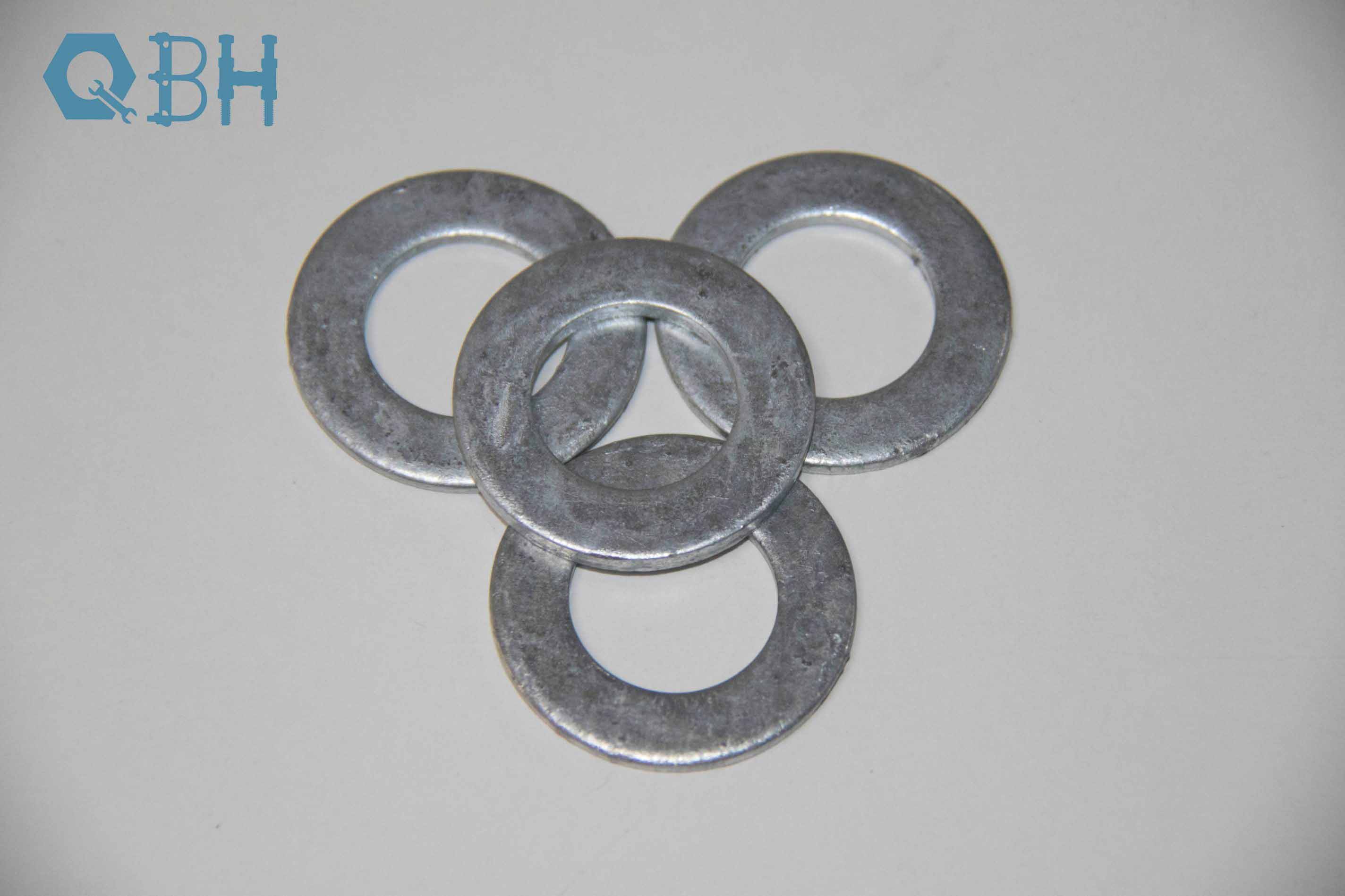Why Flat Washer Essential for Secure Fastening?
2025-09-10
In the world of industrial manufacturing, construction, and machinery assembly, fasteners play a vital role in ensuring structural integrity and safety. Among them, the flat washer might seem like a small, insignificant component, but its impact on performance and durability cannot be underestimated. Flat washers are thin, disc-shaped components placed between a fastener—such as a bolt or screw—and the surface of a connected part. Their primary role is to distribute loads, reduce surface damage, enhance stability, and ensure secure fastening.
Understanding Flat Washers: Definition, Purpose, and Benefits
A flat washer is a thin, circular plate with a central hole designed to accommodate a fastener. While small, flat washers perform critical functions that ensure both the strength and longevity of bolted assemblies.
Key Functions of Flat Washers
-
Load Distribution
Flat washers spread the load of the fastener evenly across the surface area, preventing localized stress and deformation. -
Surface Protection
By acting as a buffer, they protect softer materials like wood, aluminum, or plastic from scratches and damage caused by bolts or nuts. -
Vibration Resistance
In high-vibration environments, flat washers help stabilize the joint and reduce loosening caused by constant motion. -
Corrosion Prevention
Depending on material selection, flat washers can protect assemblies against rust and environmental wear. -
Improved Fastener Stability
When paired with bolts and screws, flat washers improve the overall holding power, ensuring that the fastener remains tightly secured.
Technical Specifications and Product Parameters
When selecting flat washers for industrial, automotive, construction, or household applications, it’s essential to evaluate several critical specifications. Choosing the right combination of dimensions, materials, and finishes ensures reliable performance in demanding environments.
| Parameter | Specification Range | Description |
|---|---|---|
| Material | Carbon Steel, Stainless Steel, Alloy Steel, Brass, Nylon | Determines strength, corrosion resistance, and durability |
| Surface Finish | Zinc-Plated, Hot-Dip Galvanized, Black Oxide, Nickel-Plated | Provides additional corrosion protection and enhances appearance |
| Inner Diameter (ID) | 3 mm – 50 mm | Matches the diameter of the bolt or screw |
| Outer Diameter (OD) | 6 mm – 100 mm | Controls load distribution area |
| Thickness | 0.5 mm – 5 mm | Impacts structural rigidity and load-bearing capacity |
| Standards | DIN 125, ISO 7089, ANSI B18.22.1 | Ensures compatibility with global industrial requirements |
| Hardness | 100HV – 350HV | Determines resistance to deformation under stress |
| Applications | Automotive, Construction, Aerospace, Marine, Electrical | Defines typical use cases and environmental demands |
These technical factors are essential when matching washers with specific bolts, nuts, or threaded assemblies to ensure maximum efficiency and durability.
Applications of Flat Washers Across Industries
Flat washers are used in almost every industry that involves assembly, fastening, or mechanical stability. Their versatility makes them an indispensable component in high-load and precision-engineered environments.
Industrial Applications
-
Construction and Infrastructure: Used in steel frameworks, bridges, and heavy-duty machinery installations.
-
Automotive Manufacturing: Essential in engine assemblies, chassis structures, and body components to withstand vibrations and dynamic loads.
-
Electrical Equipment: Provide insulation and support when fastening delicate circuits and connectors.
-
Aerospace and Marine Engineering: Designed for extreme conditions, stainless steel and coated washers offer excellent corrosion resistance.
Everyday Uses
-
Furniture assembly
-
DIY home improvement projects
-
Appliance repairs
-
Electronic device installations
The right choice of material and finish determines whether a flat washer is suitable for heavy-duty industrial conditions or everyday household tasks.
How to Choose the Right Flat Washer for Your Project
Choosing the right flat washer is more than matching size to your bolt—it involves understanding the environment, load demands, and potential exposure to stress factors.
Identify Your Load Requirements
-
Light-duty applications: Thin washers made of brass, nylon, or stainless steel are sufficient.
-
Heavy-duty applications: High-carbon steel washers with hardened surfaces are preferable.
Select the Right Material
-
Stainless Steel (304/316) → Best for corrosion resistance and marine environments.
-
Carbon Steel → Cost-effective option for general engineering applications.
-
Brass or Copper → Suitable for electrical insulation and decorative purposes.
-
Nylon → Lightweight and non-conductive, ideal for electronics.
Match Standard Specifications
Ensure compatibility with DIN, ISO, or ANSI standards for optimal performance and global interchangeability.
Consider Surface Finish
Coated or plated washers improve anti-corrosion capabilities and aesthetic appearance, which is vital in visible assemblies.
Frequently Asked Questions (FAQs)
Q1: What is the difference between a flat washer and a spring washer?
Answer: A flat washer distributes load and protects surfaces, while a spring washer provides locking action to prevent loosening under vibration. In many assemblies, both are used together for maximum performance.
Q2: How do I choose the correct size flat washer?
Answer: Measure the bolt’s outer diameter and select a washer with an inner diameter that matches it precisely. Then, ensure the outer diameter is large enough to distribute the load effectively but not so large that it interferes with surrounding components.
Why Partner with QBH for High-Quality Flat Washers
When it comes to sourcing reliable flat washers for demanding applications, QBH stands out as a trusted supplier in the global fastening solutions market. With years of expertise, state-of-the-art production facilities, and strict adherence to international quality standards, QBH delivers products that guarantee performance, precision, and durability.
Whether your project involves construction, automotive manufacturing, electronics, or aerospace engineering, QBH provides customized solutions tailored to your specific requirements. Our commitment to premium materials, advanced finishes, and precise tolerances ensures that every washer we produce meets or exceeds industry expectations.
If you’re looking for a dependable partner for your fastening needs, contact us to discuss your project specifications and request a personalized quote.
